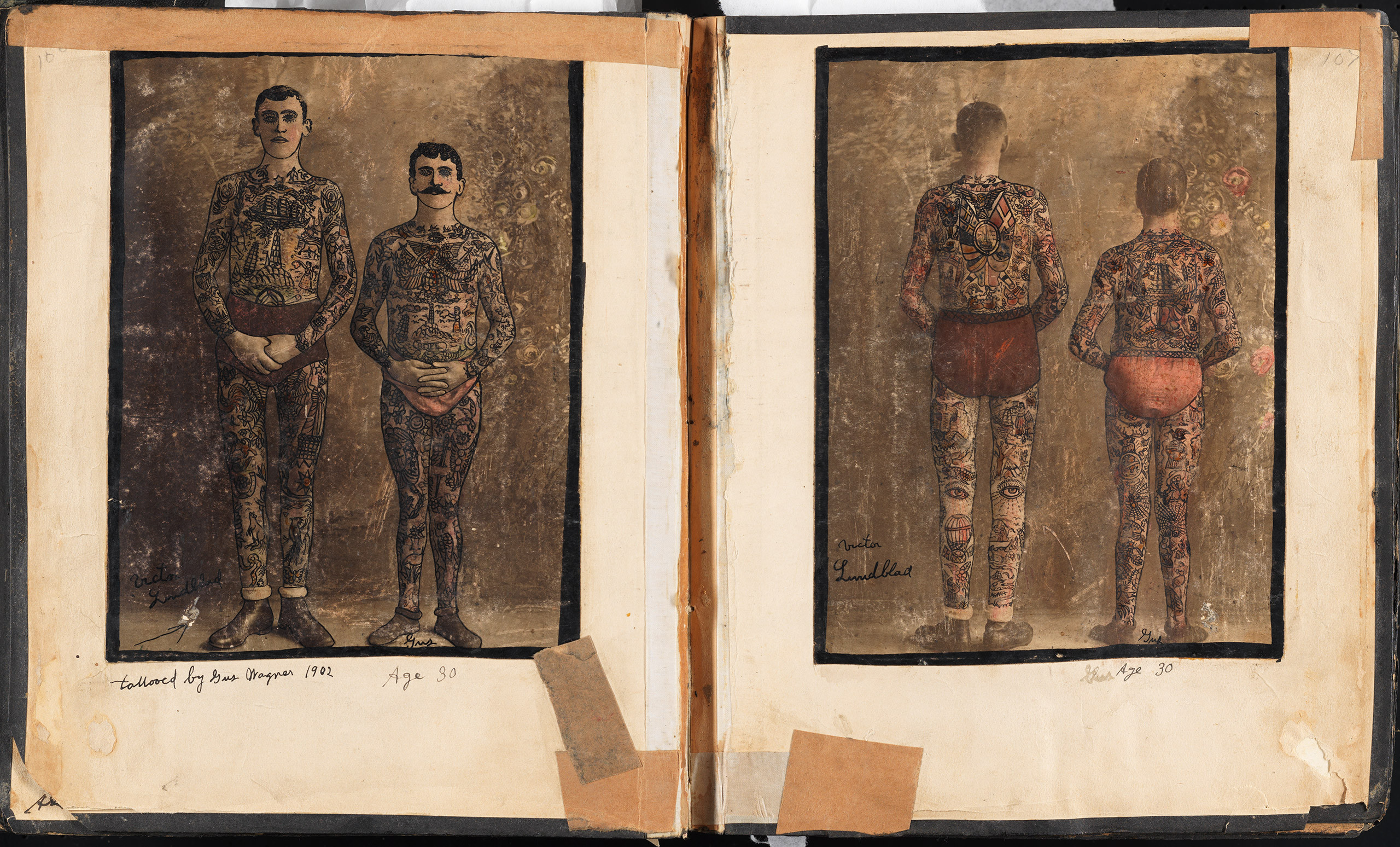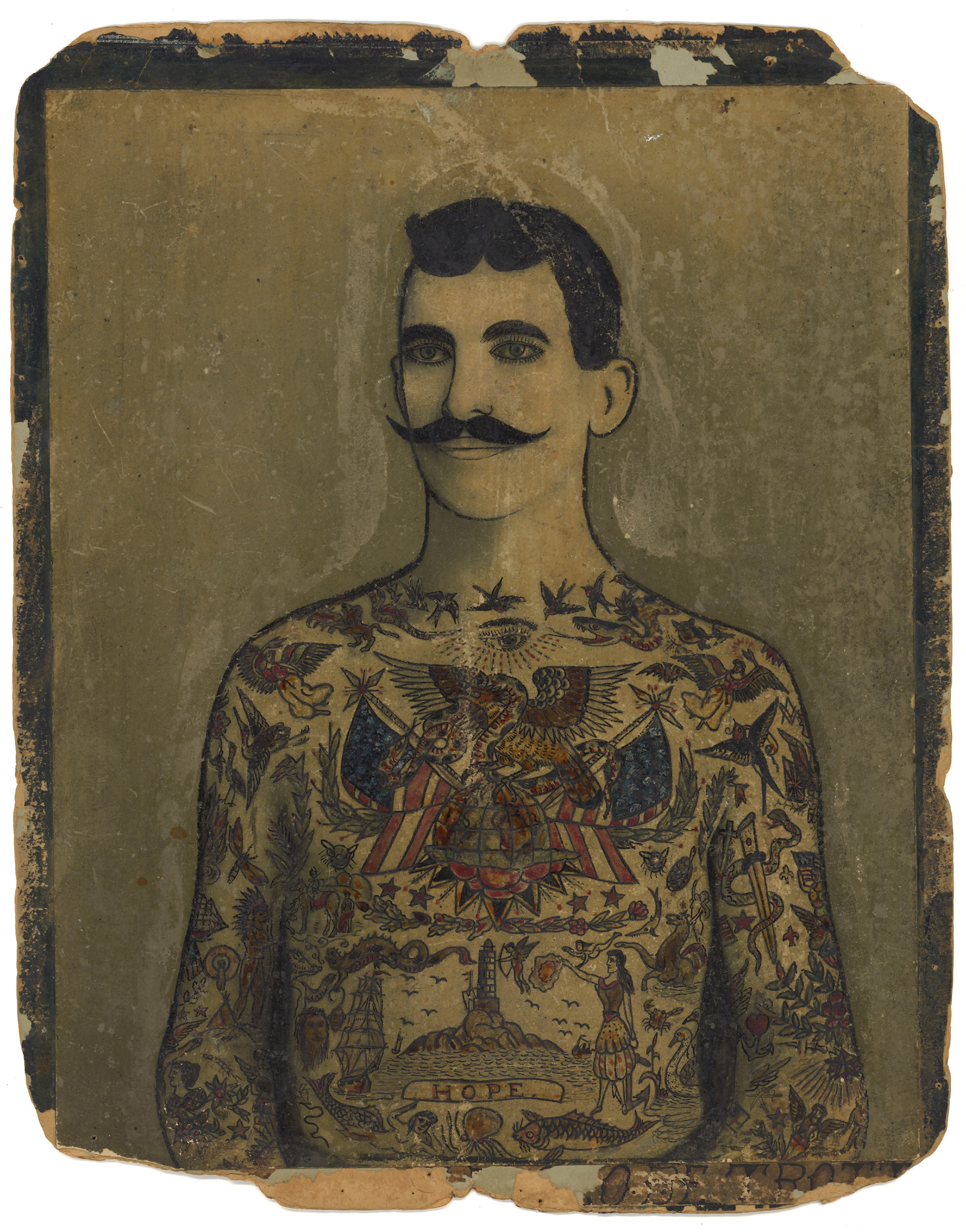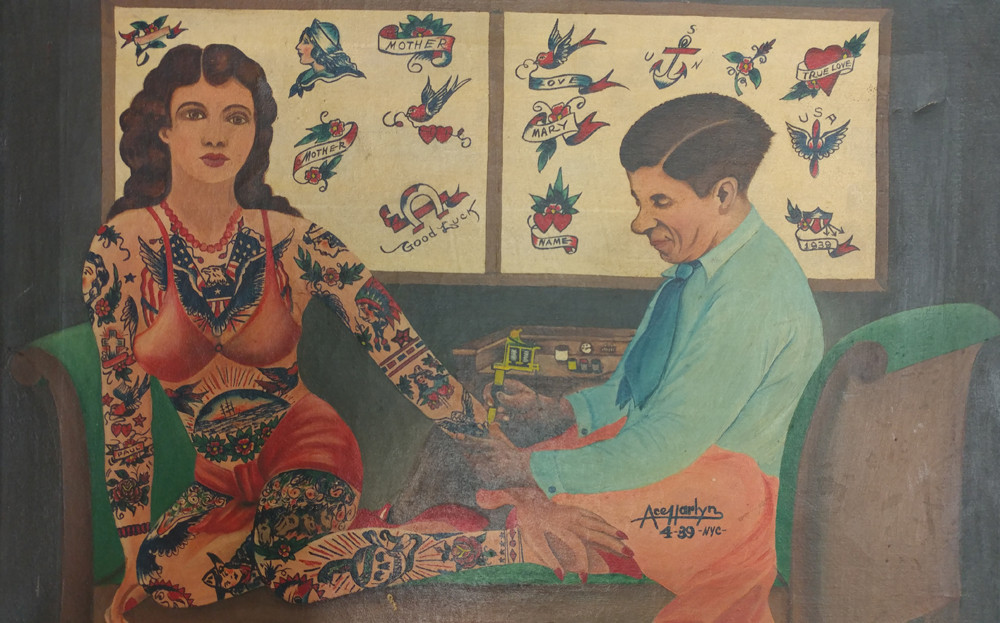Are you curious about the history of tattooing and wondering, Did They Have Tattoos In The 1800s? Absolutely, the 1800s were a vibrant period for tattoo art and body modification, witnessing its evolution from practical markings to high-society fashion. At tattooat.com, we delve into the rich history and artistry of tattoos, offering insights into tattoo culture, historical tattoo trends, and the fascinating stories behind the ink. Dive in to discover how tattooing thrived in the 19th century, shaping the modern tattoo landscape we know and love, including tattoo designs, tattoo aftercare and tattoo inspiration.
1. Tattooing in the 1800s: Unveiling the Inked Truth
Did they have tattoos in the 1800s? Yes, tattooing was prevalent and evolving throughout the 19th century, experiencing a surge in popularity across different social strata and cultures.
Tattooing in the 1800s was far from a fringe activity. It was a practice deeply embedded in various cultures, from indigenous communities to seafaring circles, and even made its way into the fashion-conscious elite. Understanding the 19th-century tattoo scene involves exploring its diverse expressions and functions:
1.1. Maritime Tattoos: A Sailor’s Tale
How did sailors influence the popularity of tattoos in the 1800s? Sailors played a crucial role in popularizing tattoos as they traveled the world and encountered different tattooing traditions.
Sailors were among the earliest adopters of tattooing in the West. After encountering Polynesian tattooing practices during voyages led by explorers like James Cook, they brought the art back to Europe and America. These maritime tattoos often held symbolic meanings related to their seafaring lives, such as anchors for stability, pigs and roosters for good luck, and depictions of their travels. According to the South Street Seaport Museum, these tattoos were not just decorations but talismans and records of their journeys.
 Sailors sporting traditional tattoos
Sailors sporting traditional tattoos
1.2. Indigenous Tattoo Traditions: Ancient Practices Endure
What role did Native American tattoos play in the 1800s? Native American tribes maintained their rich tattooing traditions, often using tattoos for spiritual, medicinal, and social purposes.
Indigenous peoples in North America had practiced tattooing for centuries before the 1800s. These tattoos often represented battle victories, protective spirits, and tribal affiliations. For example, the King of the Maquas (Mohawk tribe) was depicted with black lines covering his chest and face in the early 18th century. These tattoos were integral to their cultural identity and spiritual beliefs.
1.3. The Rise of Professional Tattooing: From Sideshows to High Society
When did professional tattoo artists emerge in the 1800s? The mid-19th century saw the emergence of professional tattoo artists, catering to a growing demand for tattoos among various social classes.
The mid-19th century marked the beginning of professional tattooing in America, with Martin Hildebrandt opening the first tattoo shop in New York City. His clientele included Civil War soldiers seeking identification markings. As tattooing gained popularity, it also entered the realm of entertainment, with tattooed women finding fame and economic independence in circuses and sideshows, as noted by the New-York Historical Society.
1.4. High Society’s Ink: A Victorian Trend
Did upper-class individuals get tattoos in the 1800s? Yes, tattooing became a fashionable trend among the Victorian elite, influenced by royalty and the desire for exotic ornamentation.
In the late 19th century, tattooing became a fashion statement among the Victorian elite, influenced by the British royalty. After the Prince of Wales (later King Edward VII) and his sons got tattoos, New York’s high society followed suit. Women in particular embraced this trend, often getting delicate designs like butterflies and flowers. Lady Randolph Churchill, Winston Churchill’s mother, famously had a snake tattoo on her wrist.
2. Iconic Figures and Tattoo Artists of the 1800s
Who were some notable figures associated with tattooing in the 1800s? The 19th century saw the rise of influential tattoo artists and tattooed individuals who shaped the landscape of tattooing.
The 1800s were populated with fascinating personalities who contributed to the evolution of tattooing. These individuals ranged from pioneering artists to heavily tattooed performers who captivated audiences.
2.1. Martin Hildebrandt: The Pioneer
Who was Martin Hildebrandt? Martin Hildebrandt was the first professional tattoo artist in America, establishing his shop in New York City during the mid-19th century.
Martin Hildebrandt is recognized as the first professional tattoo artist in the United States. He set up his shop in New York City during the Civil War, providing tattoos for soldiers as a form of identification. His pioneering work laid the foundation for the professional tattooing industry in America.
2.2. Augustus “Gus” Wagner: The Globe Trotter
Who was Gus Wagner? Gus Wagner was a sailor and sideshow performer who became one of the most tattooed men in America, showcasing his extensive body art.
Augustus “Gus” Wagner was a prominent figure in the history of American tattooing. As a sailor and sideshow performer, he traveled the world, learning and showcasing various tattooing techniques. With over 800 tattoos, he was considered one of the most tattooed men of his time. The South Street Seaport Museum has dedicated an exhibition to his life and work, highlighting his influence on modern tattooing.
 Gus Wagner's tattoo flash
Gus Wagner's tattoo flash
2.3. Nora Hildebrandt: The Tattooed Lady
Who was Nora Hildebrandt? Nora Hildebrandt was a sideshow performer known for her extensive tattoos, who gained fame for her captivating performances.
Nora Hildebrandt was a well-known tattooed lady in the late 19th century. She gained fame for her performances in circuses and sideshows, where she displayed her extensive collection of tattoos. Her story, though sometimes embellished with tales of forced tattooing, represents the economic opportunities that tattooing provided for women during that era.
2.4. Lady Randolph Churchill: The Society Icon
Why was Lady Randolph Churchill significant in the history of tattoos? As a member of high society, Lady Randolph Churchill helped popularize tattooing among the elite, making it a fashionable trend.
Lady Randolph Churchill, the mother of Winston Churchill, was a prominent figure in popularizing tattoos among the upper class. Her snake tattoo, hidden beneath a bracelet, exemplified the discreet yet fashionable nature of tattooing among the Victorian elite.
3. The Evolution of Tattoo Designs in the 1800s
What were the popular tattoo designs in the 1800s? Tattoo designs in the 19th century ranged from nautical symbols and patriotic emblems to delicate floral patterns and exotic motifs.
The 1800s saw a diverse range of tattoo designs, reflecting the cultural influences and personal stories of the wearers. These designs evolved over time, influenced by maritime traditions, indigenous art, and Victorian aesthetics.
3.1. Nautical and Patriotic Symbols: Expressions of Identity
What types of nautical tattoos were common in the 1800s? Anchors, ships, and other nautical symbols were popular among sailors, representing stability, adventure, and maritime pride.
Nautical tattoos were prevalent among sailors, featuring designs such as anchors, ships, and nautical stars. These symbols often represented their profession, travels, and personal beliefs. Patriotic emblems, like eagles and flags, were also common, reflecting national pride and identity.
3.2. Floral and Exotic Motifs: Embracing Elegance and Intrigue
Why did floral and exotic designs become popular? Floral and exotic motifs appealed to the Victorian elite, symbolizing beauty, elegance, and a fascination with foreign cultures.
As tattooing gained popularity among the upper class, delicate floral designs like roses, butterflies, and dragons became fashionable. These motifs represented beauty, elegance, and a fascination with exotic cultures. Lady Randolph Churchill’s snake tattoo exemplifies this trend, showcasing a blend of elegance and intrigue.
3.3. Script and Commemorative Tattoos: Personal Narratives in Ink
What types of script tattoos were common? Names, dates, and significant phrases were often tattooed to commemorate important events or honor loved ones.
Script tattoos, including names, dates, and meaningful phrases, were used to commemorate important events, honor loved ones, or express personal beliefs. Civil War soldiers often got their names and identification numbers tattooed, while others marked significant life events with commemorative ink.
4. Tattooing Techniques and Technology in the 1800s
How did tattooing techniques evolve in the 1800s? Tattooing techniques in the 19th century ranged from traditional hand-poked methods to the early development of rotary tattoo machines.
The 1800s witnessed significant advancements in tattooing techniques and technology. From traditional hand-poked methods to the invention of the electric tattoo machine, these developments transformed the art of tattooing.
4.1. Hand-Poked Tattoos: Traditional Methods Endure
What was involved in hand-poked tattoos? Hand-poked tattoos involved using needles and ink to create designs manually, a method common in indigenous cultures and early Western tattooing.
Before the advent of electric tattoo machines, hand-poked methods were the primary technique used. This involved using needles and ink to manually create designs on the skin. While time-consuming, this method allowed for precise control and was common in indigenous cultures and early Western tattooing practices.
4.2. The Invention of the Electric Tattoo Machine: A Technological Leap
When was the electric tattoo machine invented? The electric tattoo machine was invented in 1891 by Samuel O’Reilly, revolutionizing the speed and efficiency of tattooing.
A major turning point in tattooing history was the invention of the electric tattoo machine in 1891 by Samuel O’Reilly, inspired by Thomas Edison’s electric pen. This invention revolutionized the speed and efficiency of tattooing, making it more accessible and popular. The electric tattoo machine allowed artists to create more intricate and detailed designs in a shorter amount of time.
4.3. Tattoo Ink and Pigments: Colors of the Era
What types of inks and pigments were used in 1800s tattoos? Tattoo inks in the 19th century were made from natural pigments, including carbon, minerals, and plant-based dyes.
Tattoo inks in the 1800s were typically made from natural pigments. These included carbon-based inks for black designs, as well as minerals and plant-based dyes for colors. The availability and quality of inks varied, but artists often created their own formulations to achieve desired effects.
5. Cultural and Social Context of Tattoos in the 1800s
How did society view tattoos in the 1800s? The perception of tattoos in the 19th century varied across social classes, with tattoos being seen as marks of adventure, fashion, or social rebellion.
The cultural and social context of tattoos in the 1800s was complex and multifaceted. Tattoos were viewed differently across social classes, cultures, and regions, reflecting the diverse roles they played in society.
5.1. Tattoos as Symbols of Adventure and Rebellion
Why were tattoos associated with adventure? Tattoos symbolized adventure and rebellion, particularly among sailors, soldiers, and those who lived outside mainstream society.
For sailors and soldiers, tattoos represented adventure, travel, and a connection to a global community. Tattoos were also seen as symbols of rebellion, particularly among those who lived outside mainstream society. These individuals often used tattoos to express their individuality and defiance of social norms.
5.2. Tattoos and Social Status: From Outcasts to Elites
How did tattoos affect social status? Tattoos could signify different social statuses, ranging from marks of marginalization to symbols of elite fashion, depending on the context and wearer.
The relationship between tattoos and social status was complex. While tattoos were often associated with marginalized groups like sailors and criminals, they also gained popularity among the elite, who saw them as fashionable and exotic adornments. This duality reflects the evolving perception of tattoos in the 19th century.
5.3. Tattooing and Gender: Women’s Empowerment Through Ink
How did tattoos empower women in the 1800s? Tattoos offered women opportunities for economic independence and self-expression, particularly in the entertainment industry.
Tattooing played a unique role in women’s lives during the 1800s. Women who displayed their tattoos in circuses and sideshows found economic independence and fame at a time when job opportunities were limited. According to the New-York Historical Society, tattoos allowed women to take control of their bodies and challenge social norms.
 Millie Hull getting tattooed
Millie Hull getting tattooed
6. The Legacy of 1800s Tattoos on Modern Tattooing
How did tattooing in the 1800s influence modern tattoo art? The tattooing practices and designs of the 19th century laid the foundation for many modern tattoo styles and traditions.
The tattooing practices and designs of the 1800s have had a lasting impact on modern tattooing. From the techniques used to the symbols chosen, the legacy of 19th-century tattoos can still be seen in contemporary tattoo art.
6.1. The Enduring Influence of Traditional Designs
Which traditional tattoo designs from the 1800s are still popular today? Many traditional tattoo designs, such as anchors, roses, and eagles, remain popular in modern tattoo culture, often updated with contemporary styles.
Many of the traditional designs popular in the 1800s, such as anchors, roses, and eagles, continue to be used in modern tattooing. These classic designs have been reinterpreted and updated with contemporary styles, but their historical roots remain evident.
6.2. The Evolution of Tattoo Techniques
How did 1800s techniques influence modern methods? The advancements in tattooing techniques during the 1800s, such as the invention of the electric tattoo machine, paved the way for modern tattooing methods and equipment.
The invention of the electric tattoo machine in the late 19th century revolutionized the industry and paved the way for modern tattooing techniques. Today’s tattoo machines are based on O’Reilly’s original design, with ongoing refinements and improvements.
6.3. The Continued Celebration of Tattoo Culture
How is tattoo culture celebrated today? Tattoo culture is celebrated through conventions, art exhibitions, and media, showcasing the diverse and evolving world of tattooing.
Today, tattoo culture is celebrated through tattoo conventions, art exhibitions, and media coverage. These events showcase the diverse and evolving world of tattooing, highlighting both traditional and contemporary styles. The historical significance of tattooing is also recognized, with museums and historical societies hosting exhibitions that explore the art and culture of tattooing throughout history.
7. Famous Tattoo Artists Today
7.1. Ami James
Known for his traditional American and Japanese styles.
7.2. Kat Von D
Celebrated for her black and grey portrait work.
7.3. Paul Booth
Famous for his dark and macabre designs.
7.4. Nikko Hurtado
Renowned for his hyper-realistic color portraits.
8. Tattoo Styles By Year
| Year | Style |
|---|---|
| 2018 | Geometric, watercolor |
| 2019 | Fine line, minimalist |
| 2020 | Illustrative, neo-traditional |
| 2021 | Abstract, trash polka |
| 2022 | Blackwork, dotwork |
| 2023 | Realism, surrealism |
| 2024 (est) | AI-inspired designs, augmented reality tattoos |
9. Tattoo Events In The US
| Month | Event | Location |
|---|---|---|
| January | Motor City Tattoo Expo | Detroit, MI |
| February | Philadelphia Tattoo Arts | Philadelphia, PA |
| March | Hell City Tattoo Fest | Phoenix, AZ |
| April | Musink Tattoo Convention | Costa Mesa, CA |
| May | Paradise Tattoo Gathering | Whately, MA |
| June | Golden State Tattoo Expo | Pasadena, CA |
| July | Star City Tattoo & Arts | Roanoke, VA |
| August | Tattoo Masquerade | Denver, CO |
| September | Inkcarceration | Mansfield, OH |
| October | New York Empire State | New York City, NY |
| November | Houston Tattoo Arts | Houston, TX |
| December | Art Gathering | Reno, NV |
10. FAQ About Tattoos in the 1800s
10.1. Did people of all social classes get tattoos in the 1800s?
Yes, tattoos were popular across different social classes, from sailors and soldiers to the Victorian elite.
10.2. What were some common tattoo designs during that time?
Common designs included nautical symbols, patriotic emblems, floral motifs, and script tattoos.
10.3. How were tattoos applied before the electric tattoo machine?
Tattoos were applied using hand-poked methods, which involved using needles and ink to create designs manually.
10.4. What role did tattoos play in women’s lives during the 1800s?
Tattoos provided women with opportunities for economic independence and self-expression, particularly in the entertainment industry.
10.5. Who was Martin Hildebrandt?
Martin Hildebrandt was the first professional tattoo artist in America, opening his shop in New York City during the mid-19th century.
10.6. What is the significance of Gus Wagner in tattoo history?
Gus Wagner was a sailor and sideshow performer who became one of the most tattooed men in America, showcasing his extensive body art.
10.7. How did the invention of the electric tattoo machine impact tattooing?
The electric tattoo machine revolutionized the speed and efficiency of tattooing, making it more accessible and popular.
10.8. Where can I learn more about the history of tattooing?
You can explore resources such as the New-York Historical Society, the South Street Seaport Museum, and reputable tattoo history books and articles. Also, visit tattooat.com for more in-depth articles and resources.
10.9. Are traditional tattoo designs from the 1800s still used today?
Yes, many traditional designs like anchors, roses, and eagles remain popular and have been updated with contemporary styles.
10.10. How has tattoo culture evolved since the 1800s?
Tattoo culture has evolved from being associated with marginalized groups to becoming a mainstream form of self-expression, celebrated through conventions, art exhibitions, and media.
In conclusion, exploring whether did they have tattoos in the 1800s reveals a fascinating history of diverse traditions, artistic innovation, and social evolution. From the maritime tattoos of sailors to the fashionable ink of the Victorian elite, the 19th century laid the foundation for modern tattoo culture.
Ready to explore more about tattoo history, find inspiration for your next design, or discover talented artists? Visit tattooat.com today and dive into the world of ink! Whether you’re seeking inspiration for your first tattoo or looking to expand your knowledge of tattoo history, tattooat.com is your ultimate resource. Discover stunning designs, connect with skilled artists, and learn everything you need to know about tattoo aftercare and culture. Start your tattoo journey with us now!